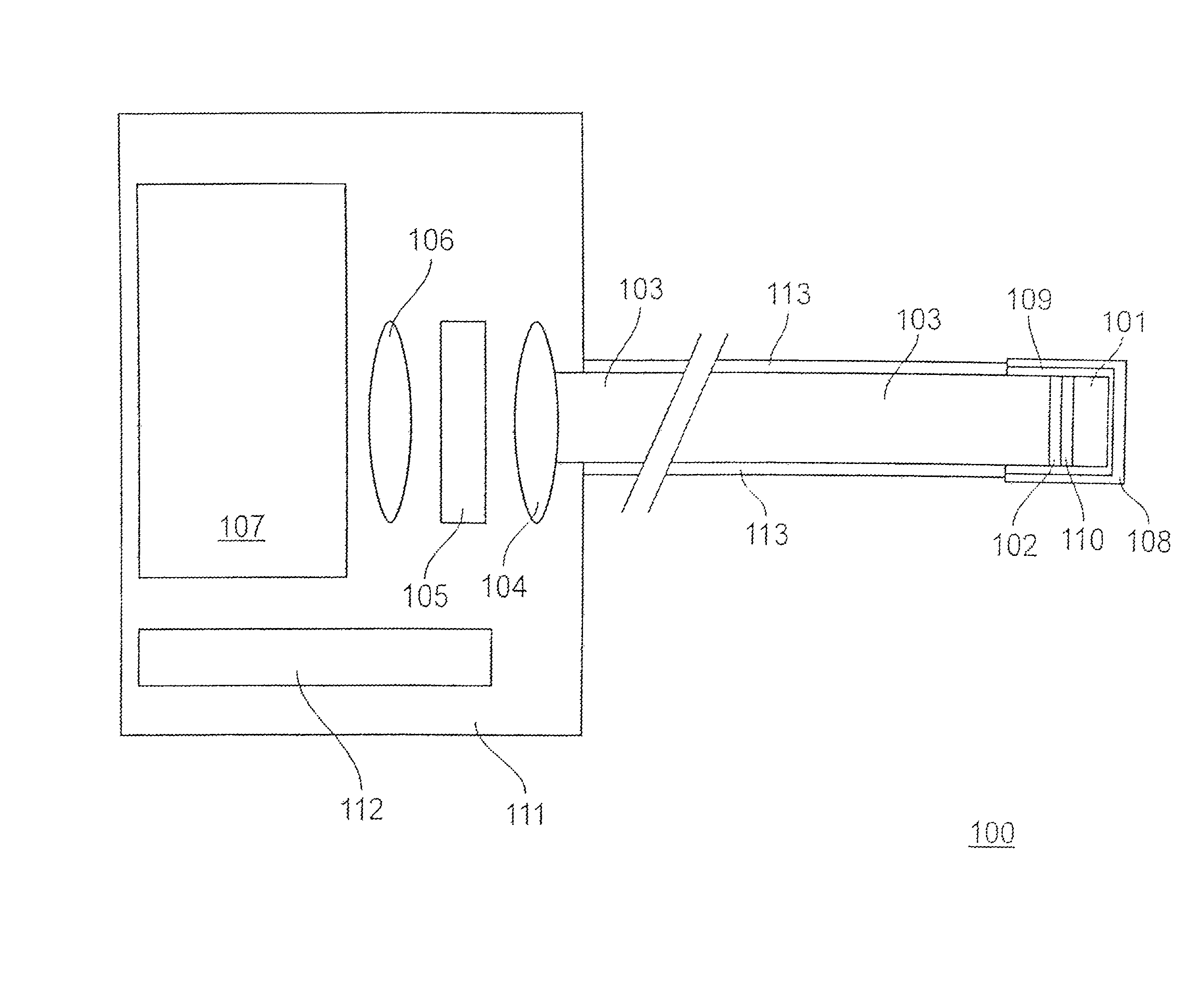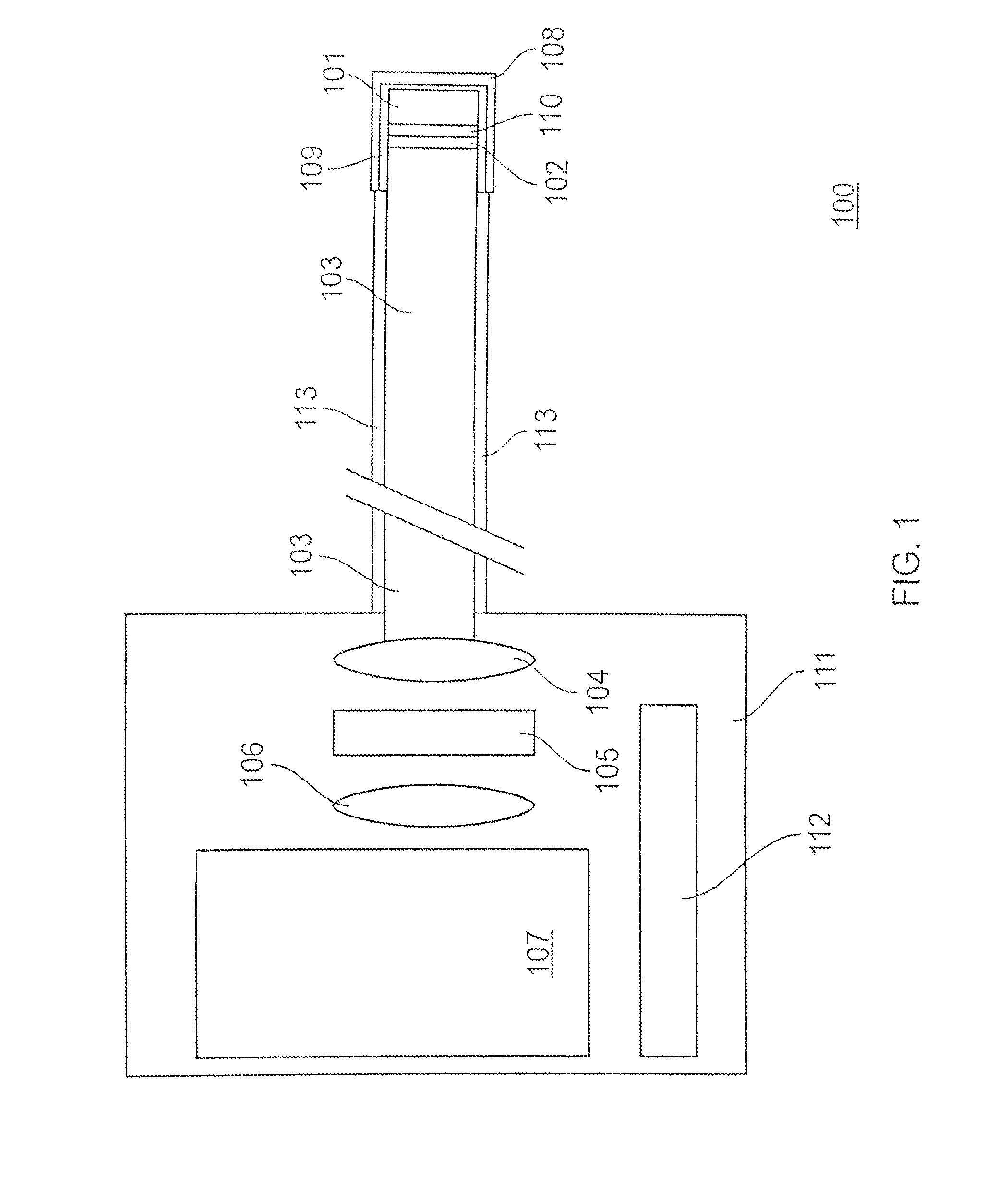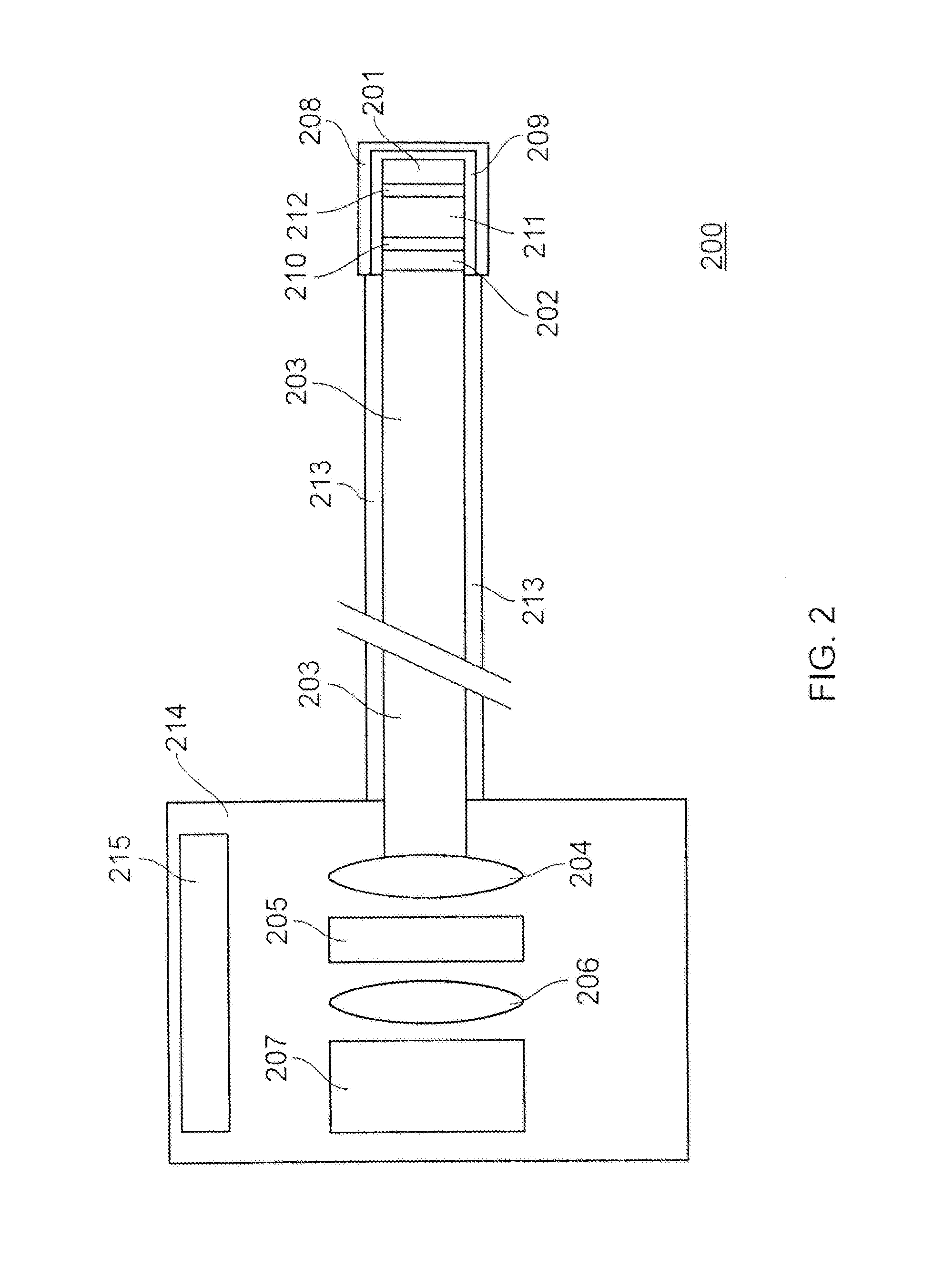Method and apparatus for imaging of radiation sources
a radiation source and imaging technology, applied in the field of radiation imaging, can solve the problems of obscuring the signal of interest, exceedingly difficult to distinguish beta particles from the large gamma ray background, and noise artefacts
- Summary
- Abstract
- Description
- Claims
- Application Information
AI Technical Summary
Problems solved by technology
Method used
Image
Examples
first embodiment
[0045]the invention will now be described with reference to FIG. 1. FIG. 1 shows a radiation detection system 100. The radiation detection system 100 has a scintillator 101. The scintillator 101 is sensitive to a first radiation type. Preferably, the scintillator 101 is a microfilm of thallium-doped Caesium Iodide (CsI:Tl). More preferably, for imaging the beta particles from fluorine-18 the microfilm of CsI:Tl is between 100 and 150 micrometers thick. This is the optimum thickness for detecting beta radiation from fluorine-18 whilst minimising interactions with gamma particles. The scintillator may be thicker for radioisotopes with higher beta energy.
[0046]The skilled reader will understand that different scintillator materials may be preferable when imaging different radiation sources. The preferred scintillator 101 must have a high light output in response to the incident radiation of interest (high efficacy). Additionally, the preferred scintillator may be selected on the amount...
second embodiment
[0106]A further embodiment will now be described with reference to FIG. 3. In some applications, for example laparoscopic surgery, it is preferable to have an angled detector head. In laparoscopic surgery, an angled detector head would allow for easier viewing of the sides of the surgical cavity. FIG. 3 is a schematic diagram showing a schematic representation of a further detector head arrangement. To aid clarity, only the fibrescope detector head is shown; the skilled person will understand that the complete fibrescope system would include all of the other elements shown in the previous embodiments. Furthermore, the skilled person would also understand that this embodiment can equally be applied to the dual scintillator arrangement described in the second embodiment, with the addition of a second scintillator separated from the first scintillator by an optical index matching material.
[0107]The radiation detection system 300 has a scintillator 301. The scintillator 301 is sensitive...
PUM
 Login to View More
Login to View More Abstract
Description
Claims
Application Information
 Login to View More
Login to View More - R&D
- Intellectual Property
- Life Sciences
- Materials
- Tech Scout
- Unparalleled Data Quality
- Higher Quality Content
- 60% Fewer Hallucinations
Browse by: Latest US Patents, China's latest patents, Technical Efficacy Thesaurus, Application Domain, Technology Topic, Popular Technical Reports.
© 2025 PatSnap. All rights reserved.Legal|Privacy policy|Modern Slavery Act Transparency Statement|Sitemap|About US| Contact US: help@patsnap.com



